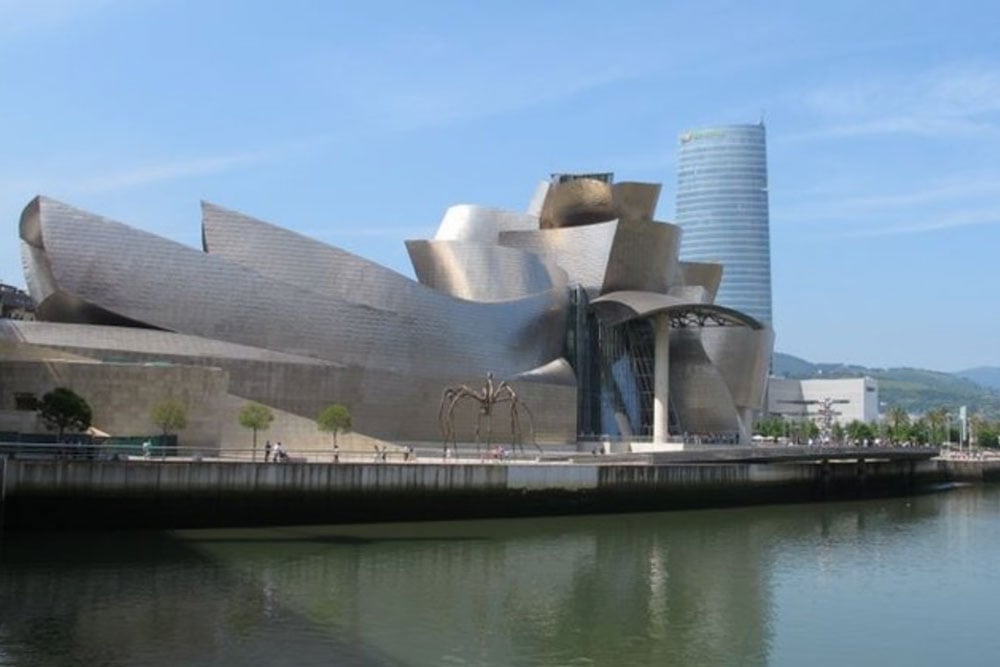From truck driving to radio, to engineering...
Despite being named “The Most Important Architect of Our Age,” by Vanity Fair, Frank Gehry got off to a shaky start. According to Gehry, “I was a truck driver in L.A...I tried radio announcing, which I wasn’t very good at. I tried chemical engineering, which I wasn’t very good at and didn’t like.” After deep soul searching he realized that what he liked best was art, museums, paintings, and music.
As a child, Gehry had played with a set of blocks given to him by his grandmother. As he got older, his sculpture utilized materials from his grandfather’s hardware store: corrugated roofing, chain-link fencing, plywood, and other “everyday” materials.
Late bloomer
He eventually went to architecture school, but even then he had set backs. He left architecture to join the army. He went back to school again to study urban planning, which he hated. Finally he returned to the architectural firm where he had apprenticed, and got to work. His first work, “The David Cabin”, drew modest acclaim—it was influenced heavily by Asian styles.
After working in Paris for five years, he moved back to L.A., where he started his own firm. He designed several homes in those early years—including his own—but soon began to land bigger accounts. He designed the Cabrillo Marine Aquarium in San Pedro, CA, the California Aerospace Museum, and the California Museum of Science and Industry.
The 'Bilbao' effect
But what Gehry is most well-known for is not his typical buildings, but his outlandish, asymmetrical, twisted and seemingly-haphazard buildings, such as the Guggenheim Museum in Bilbao, Spain (not to be confused with Frank Lloyd Wright’s Guggenheim in NYC). It was called by Vanity Fair a “signal moment in the architectural culture”, because it represents “one of those rare moments when critics, academics, and the general public were all completely united about something.” In what is called the “Bilbao Effect”, the years since the creation of the Museum have seen a $3.5 billion increase in tourism.
The “Bilbao effect” – a phenomenon whereby cultural investment plus showy architecture is supposed to equal economic uplift for cities down on their luck. — The Guardian
Gehry went on to build fluid, warped structures that captured the minds of the public and donors alike. But not everyone approves of his work. He has been hammered with the complaint of “functionless forms” and that buildings don’t seem to fit into their surroundings.
Further, many have complained about Gehry’s comment that “In the world we live in, 98 percent of what gets built and designed today is pure shit.” The magazine Jacobin said that Gehry’s work is architecture for the super-wealthy, as it is extremely expensive, not resourceful, and does not serve the interests of the overwhelming majority.
Critical acclaim
Still, Gehry has won numerous prizes and acclaim, including the Pritzker Architecture Prize. The jury said, “Always open to experimentation, he has as well a sureness and maturity that resists, in the same way that Picasso did, being bound either by critical acceptance or his successes. His buildings are juxtaposed collages of spaces and materials that make users appreciative of both the theatre and the back-stage, simultaneously revealed.”
At age 93 (as of 2020), Gehry continues to design, most recently completing University of Technology in Sydney, Australia.
Related content
31 Spectacular Buildings Designed by Frank Gehry
Supercharge Your Back-Office
Eliminate manual data entry and manual errors while simplifying nearly every back-office process with hh2's construction solutions.
Blog Transcript



